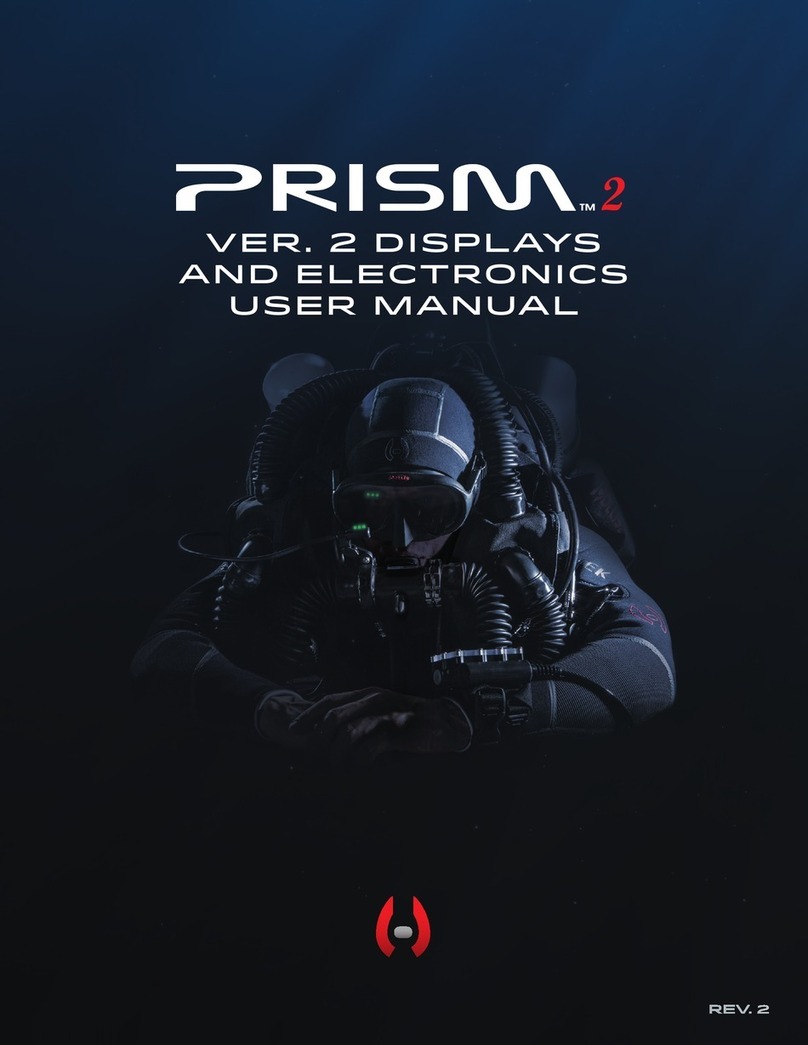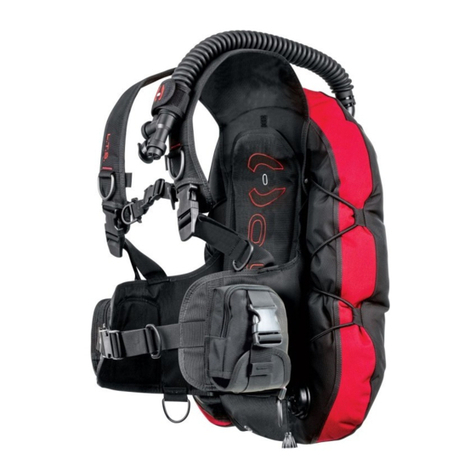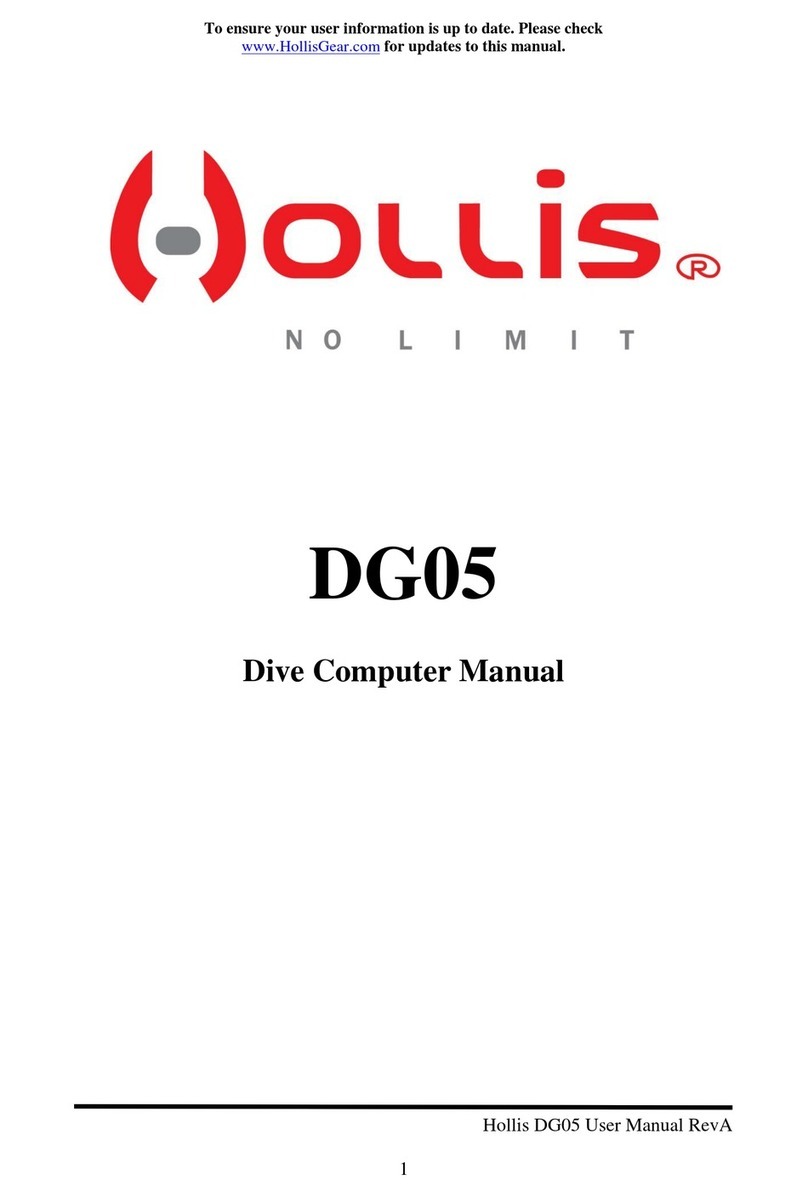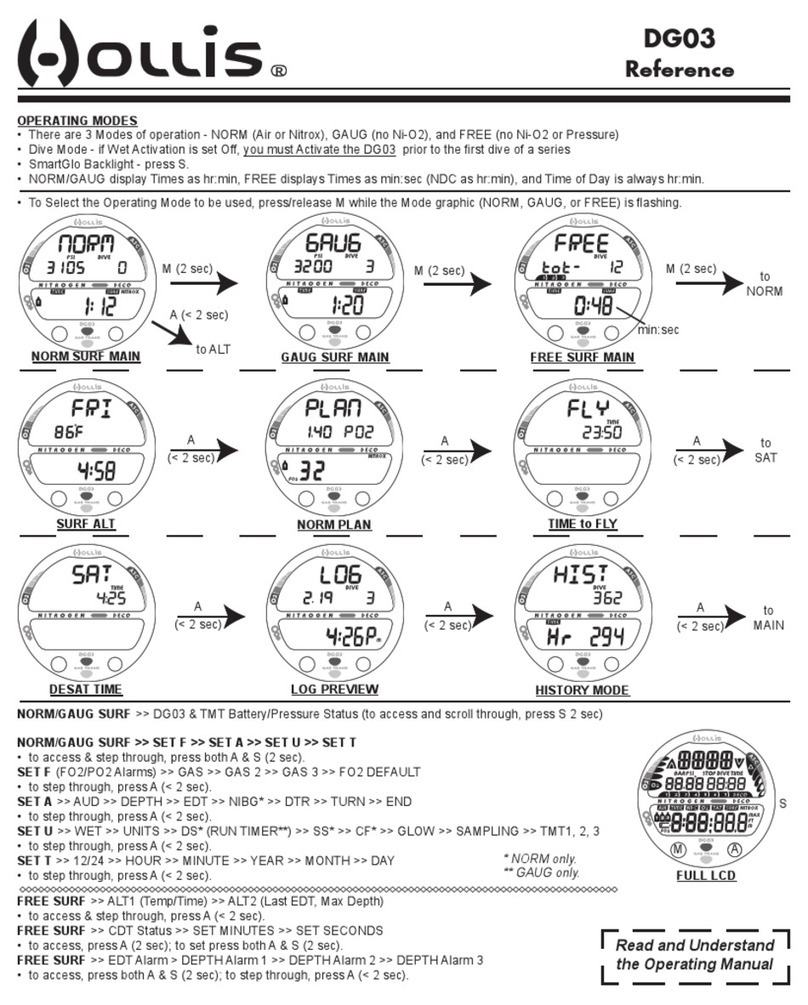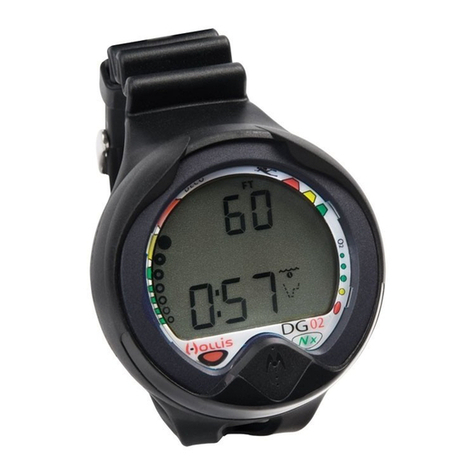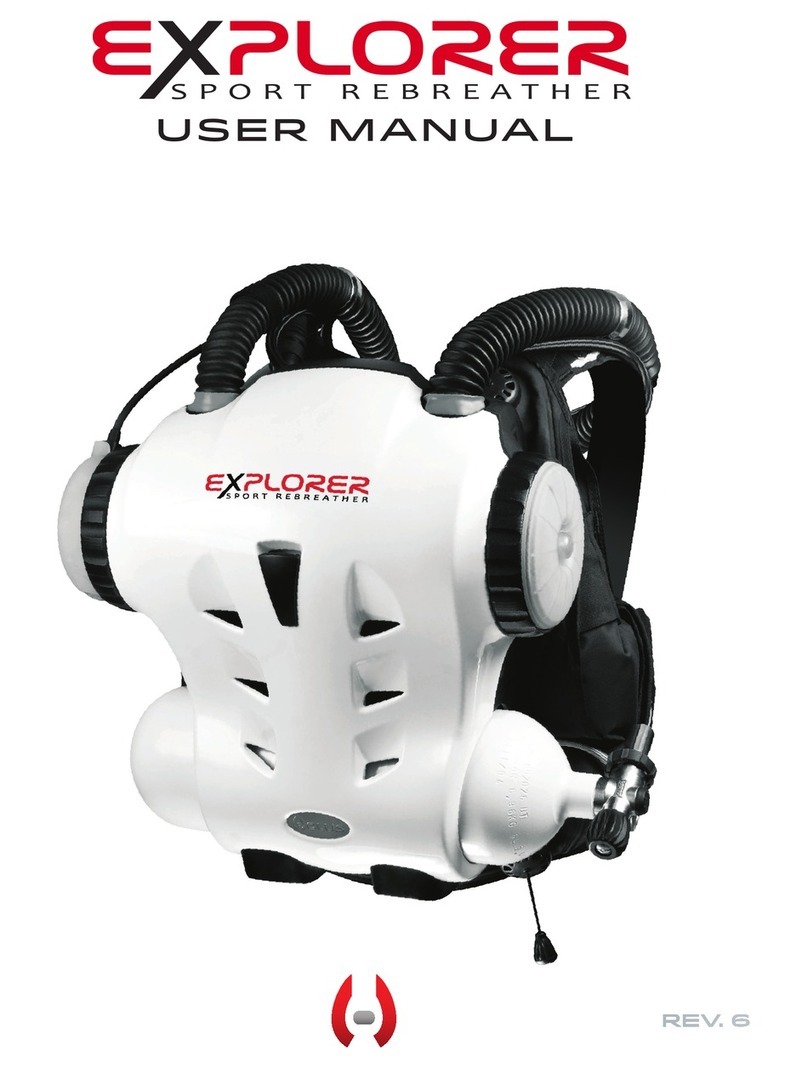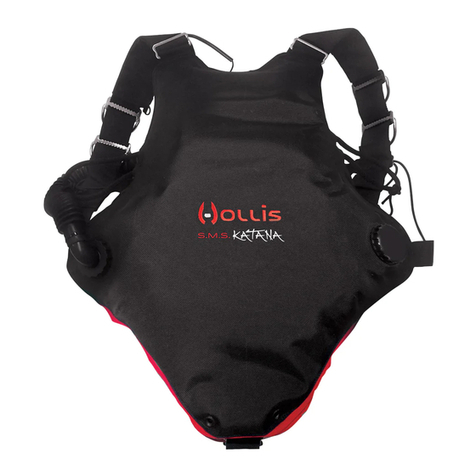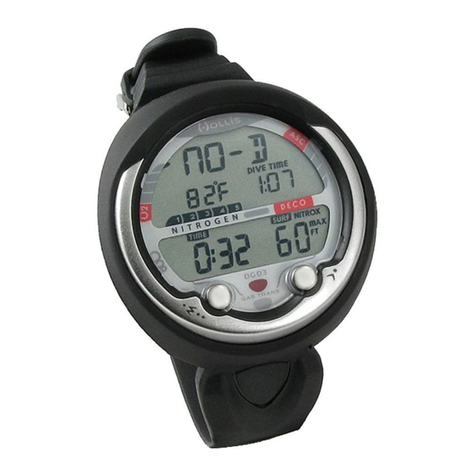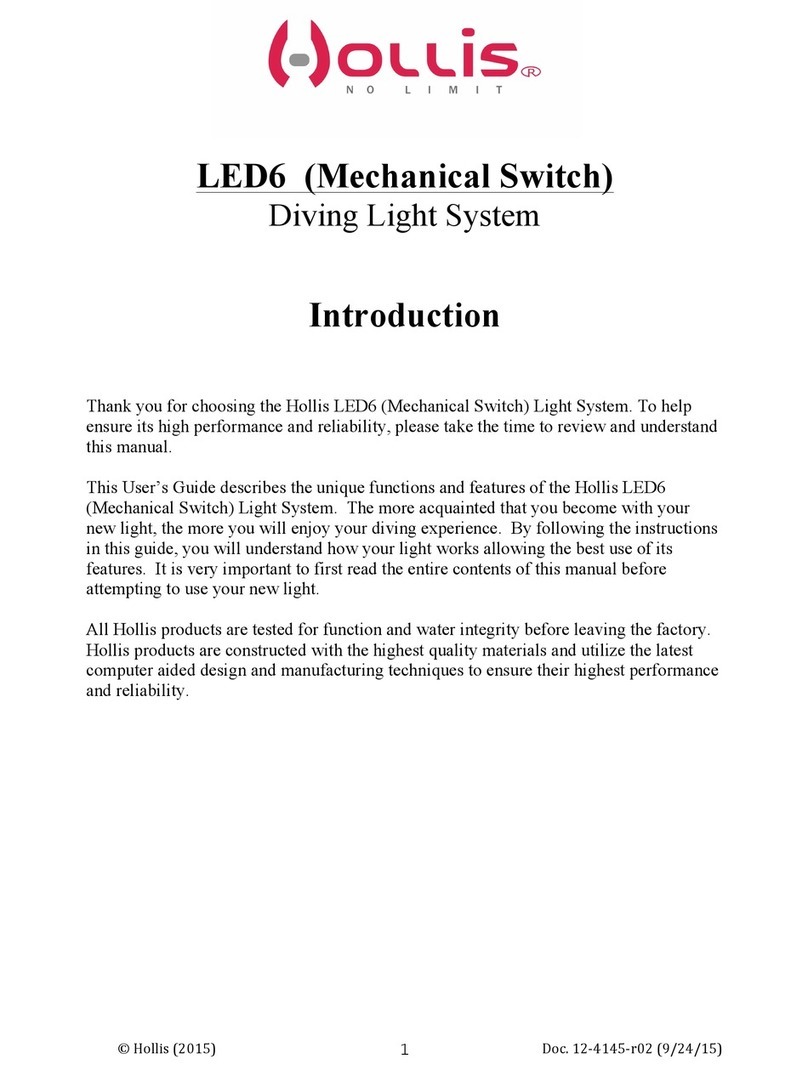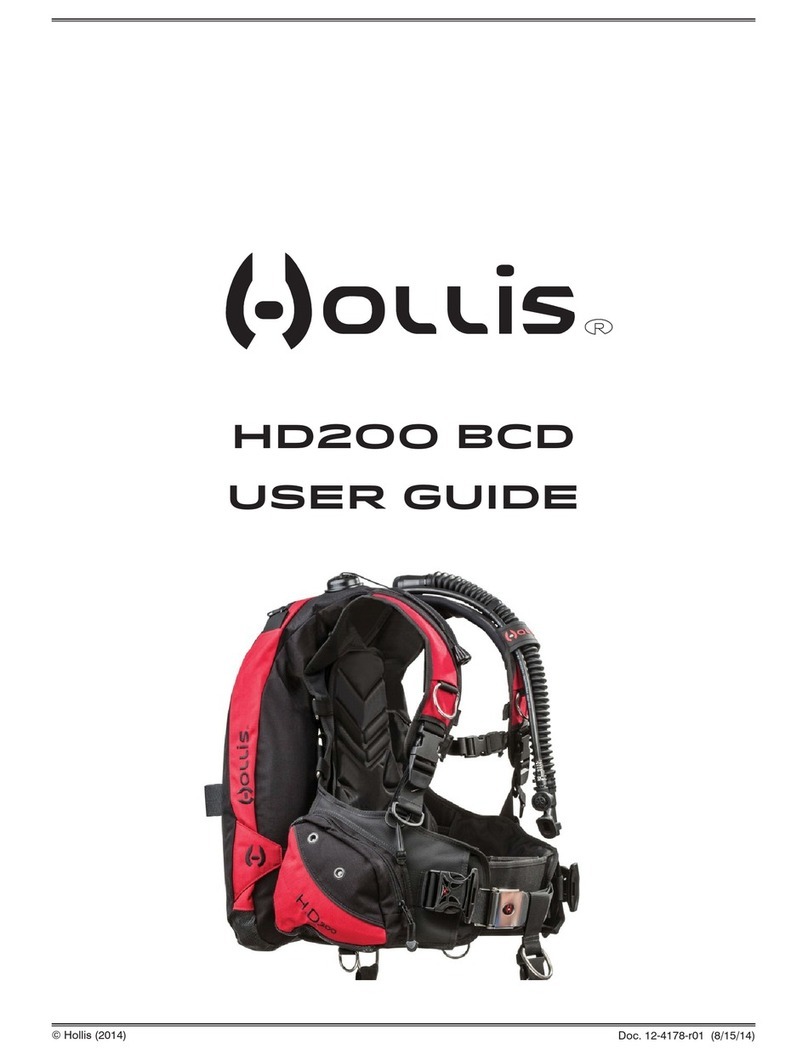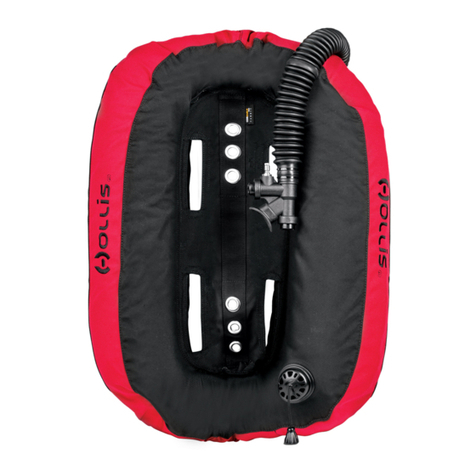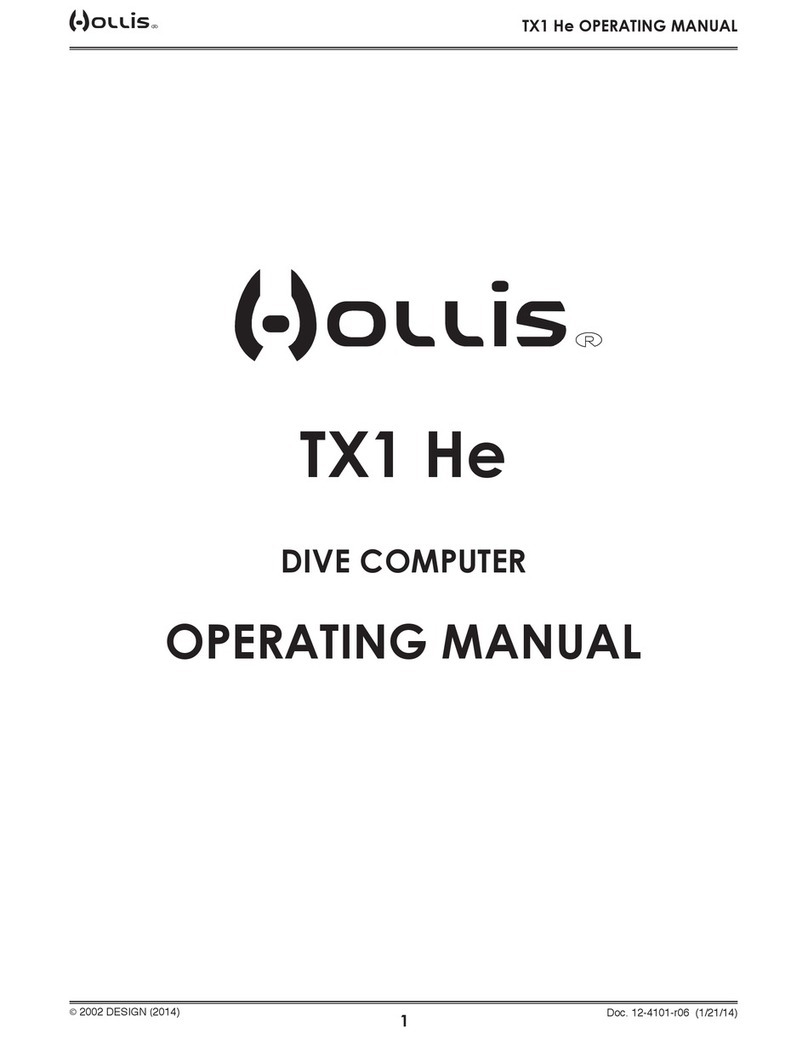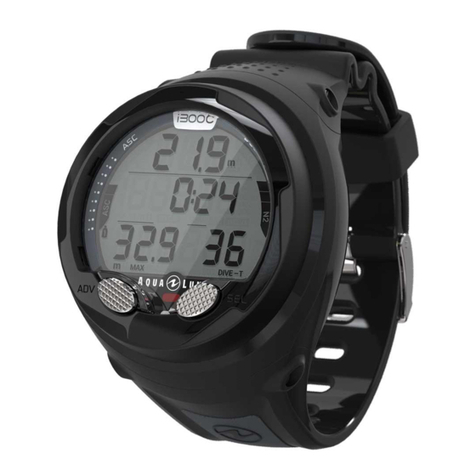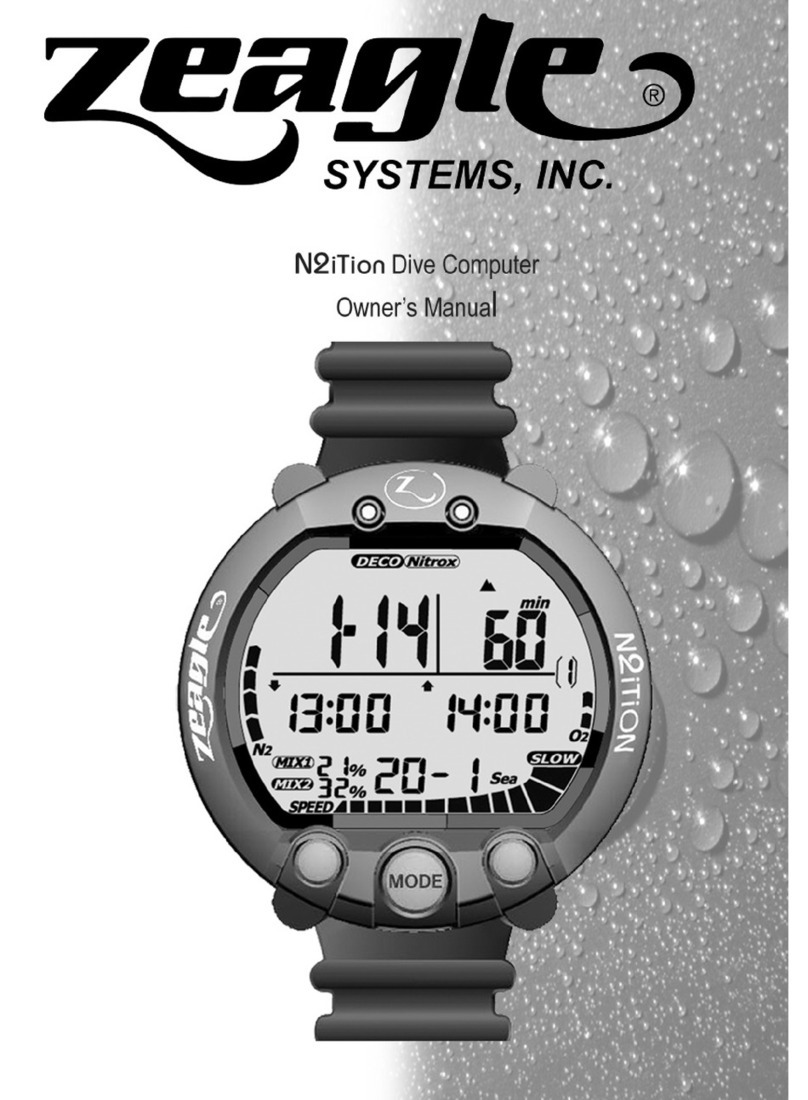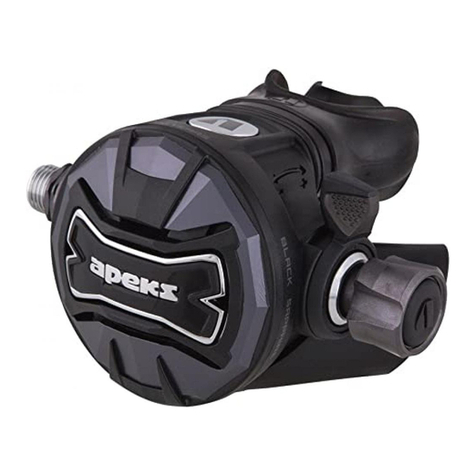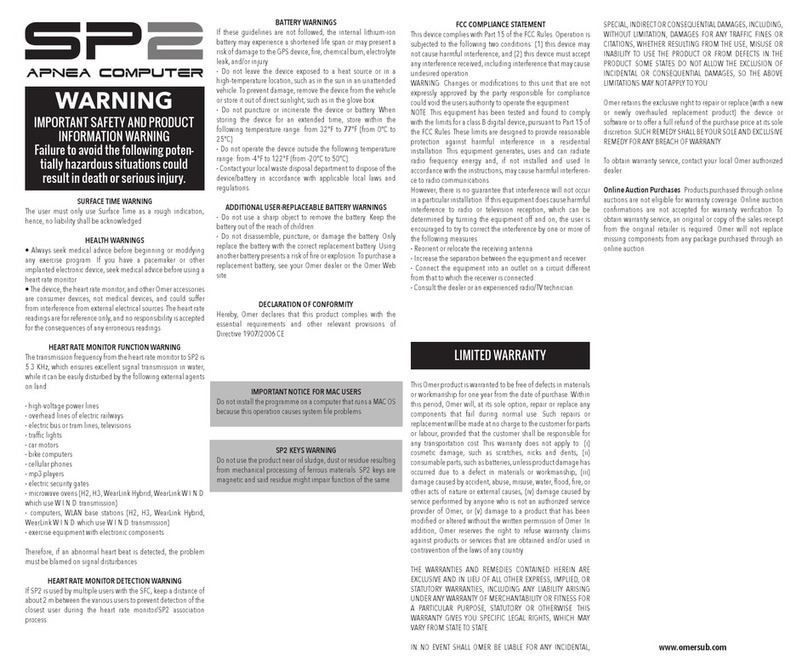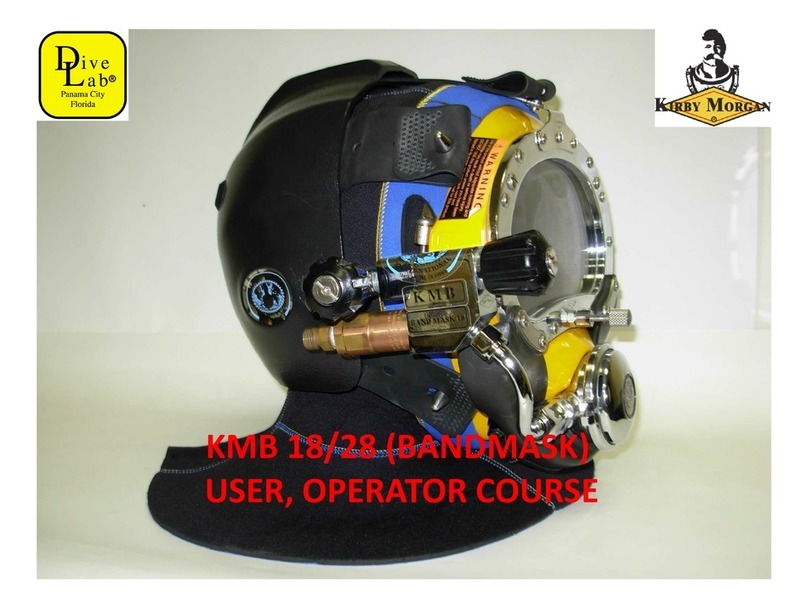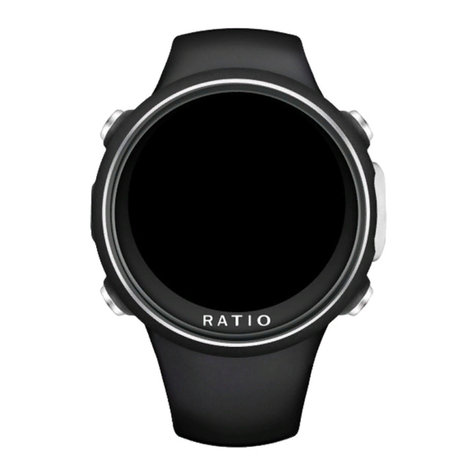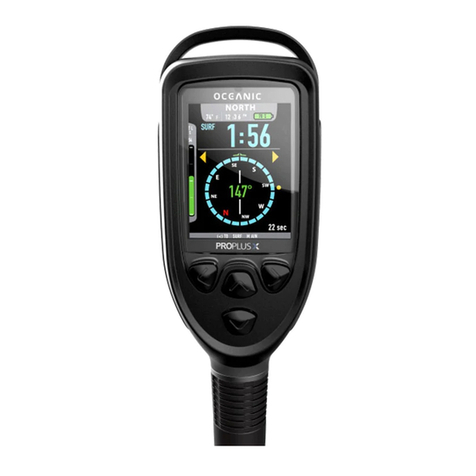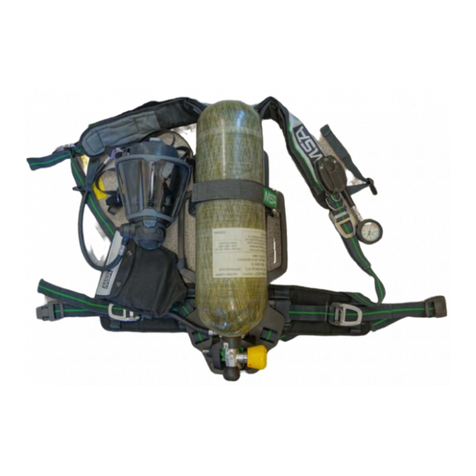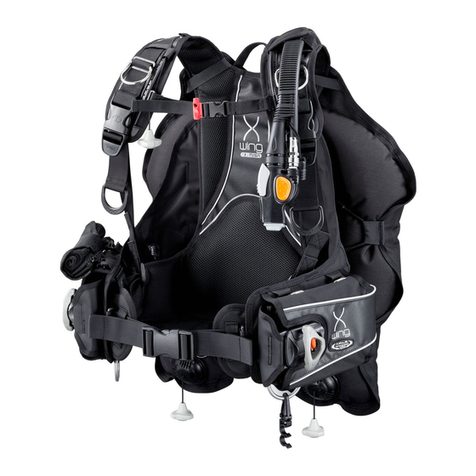
1.2
BATTERIES
The EXPLORER uses Lithium Polymer batteries. These rechargeable bat-
teries are very efficient and provide many years of reliable operation.
Rechargeable Lithium batteries can be recharged at any time and do not
have a significant memory affect, which would otherwise cause unreliable
battery operation. The batteries are UL listed (flight safe) and are double
sealed to reduce the chance of leakage to a minimum.
As extra confidence, the LSS Module battery pack includes 3 separate
batteries to ensure operation even under multiple battery failure scenarios.
During diving the battery reserve alarm will indicate when there is still suf-
ficient battery to allow a return to the surface with a small reserve. The unit
MUST then be charged prior to diving again.
The handset has its own battery that is charged from the EXPLORER Mod-
ule automatically.
The user should keep the batteries recharged and topped up to ensure
there is always maximum capacity for any dive.
A fully charged battery pack will display 1000 minutes of battery life.
DANGER: The battery estimate is based on current tempera-
ture, light usage on the handset, DCP setting and other vari-
ables. Changes in conditions (i.e. cold water) may shorten burn
times. Plan dives accordingly, and always monitor the HUD and
Wrist Displays for system operation status.
NOTE: The EXPLORER must be fully charged before its rst
use. Always dry the Optocon charge connector before attach-
ing the charging connector. Damage may result if this is not
done.
Check that all parts of the charger are kept dry and only used indoors.
Battery level alarms will activate when the batteries get low. When Battery
level alarms will activate when the batteries get low. When a battery low
alarm is activated this will be displayed on the Status screen.
WARNING: DO NOT dive a battery level, which is less than
twice your expected dive time for the next dive.
| 3
!
!
